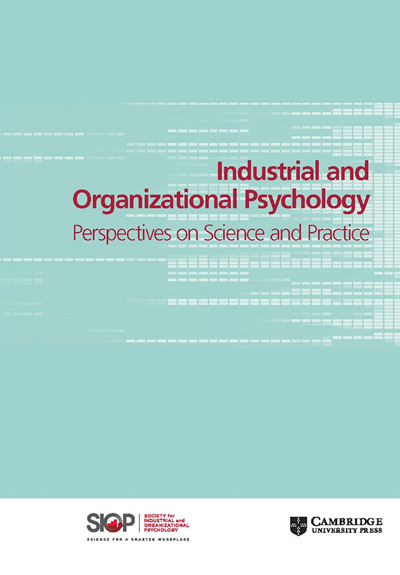理想的解决方案不一定能告诉现实
IF 4.3
3区 心理学
Q1 PSYCHOLOGY, APPLIED
Industrial and Organizational Psychology-Perspectives on Science and Practice
Pub Date : 2023-08-31
DOI:10.1017/iop.2023.39
引用次数: 1
摘要
我们赞扬Sackett等人(2023)为更新在I/O心理学领域经常被不加批判地引用和讨论的研究所做的努力,以及他们明智的建议和论文的整体思考。然而,与该领域已发表的许多研究一样,我们认为它未能达到为大多数组织的选拔实践提供信息的目的。Sackett等人(2022)对Schmidt和Hunter(1998)的更新与之前的荟萃分析陷入了相同的陷阱,因为他们为验证选择措施和随后的建议而设计的汇总研究的统计校正结果似乎假设了一个理想的(甚至可能是想象的)世界。具体而言,与几乎所有关于选拔的学术文章和教科书一样,它们的结果都是在组织拥有大量财政资源、较长时间、获得技术、,以及现成的申请人库,其中有许多申请人,他们的工作相关特征(如个性、能力、兴趣等)差异很大。然而,人力资源从业者更经常面临资源有限、招聘时间有限、可用技术(以及使用技术的经验)有限以及申请人库严重有限的问题。此外,随着环境经济气候、组织领导的战略重点、组织的成功和声誉以及技术进步的变化,这些限制可能会随着时间的推移而改变。因此,当我们面对基于修正估计的优化模型,并就选择中的最佳实践提出建议时,我们发现自己不仅要问人力资源从业者应该如何利用这些信息,还要问他们是否应该考虑这些信息。尽管这些文章有助于在学术界寻求为从业者的选择提供信息时提供假设基准,但我们不仅应该考虑在理想情况下的选择,还应该考虑在现实受限的世界中可能发生的情况。我们的立场是,如果我们研究选择在实践中是如何运作的,并尝试与从业者达成妥协,使我们的建议反映人力资源从业者面临的局限性,那么I/O心理学将得到更好的服务。1我们坦率地承认,我们没有现成的解决方案来解决这些现实世界中的局限性和问题,但我们希望这一评论能为I/O心理学中更注重实践的研究奠定基础。因此,以下是一份不完整的问题和考虑因素清单,I/O学者可能希望在未来关于选择最佳实践的研究中解决这些问题和考虑事项。本文章由计算机程序翻译,如有差异,请以英文原文为准。
Ideal solutions don’t necessarily inform reality
We applaud the efforts of Sackett et al. (2023) to update research that is often uncritically cited and discussed in the field of I–O psychology, as well as their sensible recommendations and the overall thoughtfulness of their paper. However, like much published research in this area, we believe it falls short in its aim of informing selection practices in most organizations. Sackett et al.’s (2022) update to Schmidt and Hunter (1998) falls into the same trap as prior metaanalyses in that their statistically corrected results of aggregated studies designed for validating selection measures and subsequent recommendations seem to assume an ideal (perhaps even an imaginary) world. Specifically, as with nearly all academic articles and textbooks on selection, their results are framed in a context where organizations have copious amounts of financial resources, extended periods of time, access to technology, and readily available applicant pools with numerous applicants that vary substantially in terms of their job-relevant characteristics (e.g., personality, abilities, interests, etc.). However, HR practitioners are more frequently faced with limited resources, limited time to make hires, limited available technology (and experience using it), and severely limited applicant pools. Moreover, these limitations are likely to shift over time with changes in the ambient economic climate, the strategic priorities of organizational leadership, the success and reputation of their organization, and technological progress. So, when confronted with optimized models based on corrected estimates making recommendations about best practices in selection, we find ourselves asking not only how an HR practitioner is supposed to make use of this information but whether they should consider it at all. Although such articles are useful for providing hypothetical benchmarks when academics seek to inform practitioner choices, we should not only consider what selection would look like in ideal circumstances but also what is possible in a reality-constrained world. It is our position that I–O psychology would be better served if we study how selection works in practice and try to meet practitioners halfway in terms of making our recommendations reflect the limitations HR practitioners face.1 We freely admit that we don’t have ready-made solution to these real-world limitations and problems, but we hope that this comment can serve as a foundation for a more practice-oriented stream of research in I–O psychology. Therefore, the following represent an incomplete list of issues and considerations that I–O academics may want to address in future research concerning best practices in selection.
求助全文
通过发布文献求助,成功后即可免费获取论文全文。
去求助
来源期刊

Industrial and Organizational Psychology-Perspectives on Science and Practice
PSYCHOLOGY, APPLIED-
CiteScore
7.70
自引率
10.10%
发文量
85
期刊介绍:
Industrial and Organizational Psychology-Perspectives on Science and Practice is a peer-reviewed academic journal published on behalf of the Society for Industrial and Organizational Psychology. The journal focuses on interactive exchanges on topics of importance to the science and practice of the field. It features articles that present new ideas or different takes on existing ideas, stimulating dialogue about important issues in the field. Additionally, the journal is indexed and abstracted in Clarivate Analytics SSCI, Clarivate Analytics Web of Science, European Reference Index for the Humanities and Social Sciences (ERIH PLUS), ProQuest, PsycINFO, and Scopus.
 求助内容:
求助内容: 应助结果提醒方式:
应助结果提醒方式:


